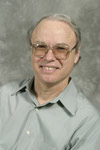非常抱歉,
你要访问的页面不存在,
非常抱歉,
你要访问的页面不存在,
非常抱歉,
你要访问的页面不存在,
验证码:

职称:professor
所属学校:University of California-Los Angeles
所属院系:Department of Life Sciences Core Education
所属专业:Biology/Biological Sciences, General
联系方式:(310) 206-4281
B.A., Biology, Stanford University 1968 Ph.D., Biophysics, Johns Hopkins University 1973
A vertebrate photoreceptor uses a G-protein receptor (rhodopsin) and a G-protein cascade to produce the electrical response that signals a change in light intensity. Powerful new techniques have made it possible to understand the working of this cascade in extraordinary detail. The reason for this is that practically every protein involved in the cascade in a photoreceptor, from the pigment molecule rhodopsin to the G-protein and channels, but including also a large number of control proteins, are expressed only in the photoreceptors and nowhere else in the body. This makes it possible with genetic techniques to create mice in which these proteins have been knocked out, over or under expressed, or replaced with proteins of modified structure. We use electrical recording to study the effects of such genetic alterations on the light responses of mouse rods, in order to understand the role of these proteins in the visual cascade. We are especially interested in modulatory enzymes and their function in light and dark adaptation. We also have a long-standing interest in mechanisms of photoreceptor degeneration in genetically inherited disease. We are presently the only laboratory in the world making measurements of changes in Ca from mouse rods with fluorescent dyes, and our experiments have implicated both increases and decreases in Ca concentration as contributing factors in the triggering of apoptosis.